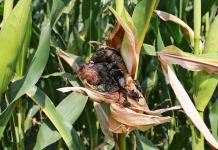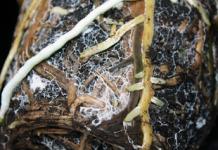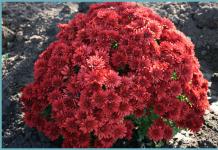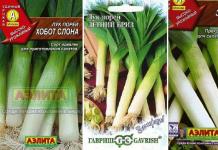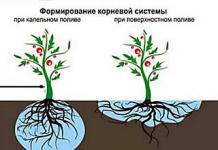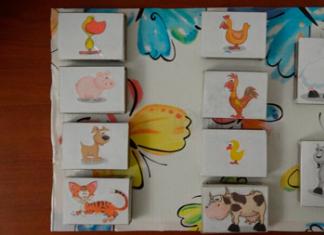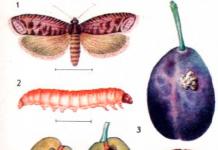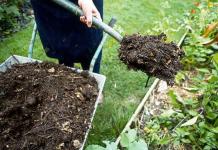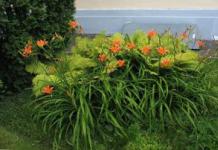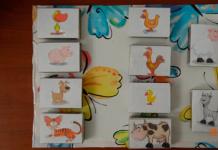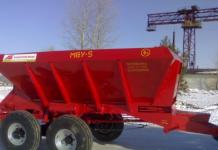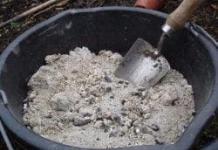It happens from year to year with many gardeners that they manage to freeze the seedlings! Despite the fact that we talked a lot about this, and about how to protect seedlings from return frosts.
And then again a flurry of questions rained down about whether it was now possible to save the frozen seedlings or that was it!
Today we will talk about emergency methods of resuscitation of frozen plants. I hope this information is useful to many...
If it so happened that the seedlings were frozen, then you should not give up. Yes! It's a pity of course: so much work and money invested! And it may not be possible to save everyone, but you need to try! Of course, for the rich, this is not a problem - he went and bought new seedlings. But not everyone has this opportunity, and purchased seedlings can always disappoint or surprise you in the future.
But frozen seedlings should not be rushed to throw away. The first rule for saving the dying, be it drought, frost, heat, lack of light, temperature changes or disease, is to spray the plants with Epin.

It is useful to spray young plants and seedlings with Epin, as well as plants that have undergone stress: frost, branch breakage, pest infestation, diseases, etc. Before spraying plants, eliminate the cause of damage/disease if possible. Epin is not a medicine or a panacea, it is an effective means of rehabilitation and maintaining the health of plants at all stages of their growth and development.
The recommendation to spray plants in the early morning or late evening is due to the fact that in sunlight the active substance of epin, epibrassinolide, evaporates very quickly, and daytime spraying will be of little use.
In addition, spray only the vegetative parts of plants - branches and leaves, not forgetting (if possible) to moisten the lower parts of the leaves with the solution. Spraying under stressful conditions (drought, lack of light, diseases, etc.) is done every 7-10 days, until the plants are completely healed. If your pets are quite healthy, spray them three times a season.
Standard Epin solution, which is suitable for spraying almost all garden crops: 1 ampoule (0.25 mg) per 5 liters of water.
One more nuance: the tap water we usually use is alkaline, and alkali significantly reduces the beneficial effects of epin. Therefore, before diluting the drug in water, add a few crystals of citric acid to it. Epin is absorbed by the plant within 2-3 days, so spraying should be carried out on non-rainy, windless days.
It’s even better to prepare a magical compote from Zdorovy Sad, Ecoberin, NV-101 and Epin. Then your plants will definitely come to life and at the same time you will get an excellent harvest! But these drugs are sold in Natural Farming Centers, if there are such in your city, then good, and Epin and NV are sold in all regular garden stores.
Restorative functions of vegetables!
Many plants have a natural regeneration function. For example, tomatoes and peppers shoot side shoots and leaves from the stem. Therefore, you should not remove them if they were caught by frost, of course, if the frost was not on the soil! But just surround them with increased attention and give them time. And they will come to life! After treatment with biological preparations, some frozen plants were covered for a while with cardboard boxes and this helped:

Seedlings of cabbage after frost, if it is also caught, then pour it with cold water and it will also go away.
Always remember that laid on time mulch and covering material always protect our crops from adverse weather conditions. Pay more attention to your little ones and they will grow up strong and healthy! http://superogorodnik.blogspot.ru/2014/05/podmerzshieseedling.html
Saving tomato seedlings
I think every summer resident has encountered this problem. I want to plant quickly, hoping to get an early harvest, and the weather gives new surprises in the form of frosts and strong winds. This usually happens in May, but there are exceptions. And I, an experienced summer resident, also got into trouble. I want to give advice on how to save your seedlings tomato. The roots of the seedlings do not freeze, so if nothing can be done with the aerial part of the plant, it is necessary to cut it to the ground. Be sure to feed it, for example with urea, to shed it. If possible, cover with film so that the roots grow faster. Care without ceasing and under the warm sun the sprouts will grow, maybe not all 100%, but 90% for sure. Get the same harvest as with the other planted seedlings, but not early, as expected.
If the above-ground part of the seedlings is not very damaged, but is still affected by frost
In this case, the seedlings must be well fed to restore the damaged leaves. Add 10 liters of urea (matchbox) to the seedlings. water, after two days treat the seedlings with a solution of a growth stimulator (for example, epin). For the severely injured tomato seedlings Regular feeding with humates and mullein will be needed.
Spring, especially in recent years, “delights” gardeners with returning frosts. Therefore, you should not be surprised if vegetable seedlings suddenly freeze. Of course, you should monitor the weather forecast and try to avoid such cases. But no one is immune from this trouble. Here you need to be able to competently reanimate seedlings, because a lot of effort is spent on growing them. Seedlings of most varieties of tomato varieties do not tolerate frost well, and if they are not carefully looked after, frost can cause significant damage to the seedling. The gardener’s task is to help frozen plants and try to bring them back to life. Of course, it is unlikely that all the seedlings will be saved, but it is necessary to try to revive as many plants as possible.
Tomato seedlings froze...
What can be done?
 Tomatoes freeze at temperatures below 5ºC - the circulation of plant juices stops and tender seedlings die. True, there are also varieties that are more frost-resistant; for them, a temperature of 0ºC is critical. If you couldn’t keep track of the tomatoes and they froze, you shouldn’t throw away the seedlings you grew with difficulty or bought with your own money. Try to revive her. We will consider methods of resuscitation measures in this article.
Tomatoes freeze at temperatures below 5ºC - the circulation of plant juices stops and tender seedlings die. True, there are also varieties that are more frost-resistant; for them, a temperature of 0ºC is critical. If you couldn’t keep track of the tomatoes and they froze, you shouldn’t throw away the seedlings you grew with difficulty or bought with your own money. Try to revive her. We will consider methods of resuscitation measures in this article.
If your seedlings are severely frozen, then their above-ground parts are unlikely to be able to recover. But the roots of seedlings are usually not exposed to frost. Therefore, you can cut off the entire above-ground part of the seedlings. After that, you need to feed. Urea is ideal for this; you just need to pour it well over the plants and cover them with film. In this way, up to 90% of seedlings can be reanimated. This will not affect the yield of tomatoes, although you will receive the fruits a little later than from the seedlings that grew “according to schedule.” Grown seedlings should be regularly fed with humates, as well as potassium fertilizer.
If frosts only slightly “hit” the tomato seedlings, and they are not seriously damaged, they can be restored with the help of fertilizing. As a top dressing, it is better to use urea. 100 ml of fertilizer will be enough for 10 liters of water. 2 days after feeding, you will need to treat the seedlings with a growth stimulator. Typically used as a stimulant "Epin".
Spraying seedlings
tomato "Epinom"
 If the seedlings are not severely damaged by frost, it is enough to give them strength with the help of Epin. Spraying frozen seedlings with Epin should be done either early in the morning or in the evening. This should not be done during the day, since epibrassinolide, which is present in Epin and is the main active component of the product, evaporates when exposed to daylight. Therefore, the efficiency will be practically zero.
If the seedlings are not severely damaged by frost, it is enough to give them strength with the help of Epin. Spraying frozen seedlings with Epin should be done either early in the morning or in the evening. This should not be done during the day, since epibrassinolide, which is present in Epin and is the main active component of the product, evaporates when exposed to daylight. Therefore, the efficiency will be practically zero.
When spraying, it is necessary to treat all vegetative parts of the seedlings (both leaves and twigs). If tap water (which has alkaline properties) is used when spraying, it greatly reduces the positive effect of Epin. It is worth throwing several crystals of citric acid into such water to neutralize the alkali. Spraying should be carried out in dry and calm weather.
It happens from year to year with many gardeners that they manage to freeze the seedlings! Despite the fact that we talked a lot about this, and about how to protect seedlings from return frosts.
And then again a flurry of questions rained down about whether it was now possible to save the frozen seedlings or that was it!
Today we will talk about emergency methods of resuscitation of frozen plants. I hope this information is useful to many...
If it so happened that the seedlings were frozen, then you should not give up. Yes! It's a pity of course: so much work and money invested! And it may not be possible to save everyone, but you need to try! Of course, for the rich, this is not a problem - he went and bought new seedlings. But not everyone has this opportunity, and purchased seedlings can always disappoint or surprise you in the future.
But frozen seedlings should not be rushed to throw away. The first rule for saving the dying, be it drought, frost, heat, lack of light, temperature changes or disease, is to spray the plants with Epin.

Epin is useful for spraying young plants and seedlings, as well as plants that have undergone stress: frost, broken branches, pest invasion, disease, etc. Before spraying plants, eliminate the cause of damage/disease if possible. Epin is not a medicine or a panacea, it is an effective means of rehabilitating and maintaining the health of plants at all stages of their growth and development.
The recommendation to spray plants in the early morning or late evening is due to the fact that in sunlight the active substance of epin, epibrassinolide, evaporates very quickly, and daytime spraying will be of little use.
In addition, spray only the vegetative parts of plants - branches and leaves, not forgetting (if possible) to moisten the lower parts of the leaves with the solution. Spraying under stressful conditions (drought, lack of light, disease, etc.) is carried out once every 7-10 days, until the plants fully recover. If your pets are quite healthy, spray them three times a season.
Standard Epin solution, which is suitable for spraying almost all garden crops: 1 ampoule (0.25 mg) per 5 liters of water.
One more nuance: the tap water we usually use is alkaline, and alkali significantly reduces the beneficial effects of epin. Therefore, before diluting the drug in water, add a few crystals of citric acid to it. Epin is absorbed by the plant within 2-3 days, so spraying should be carried out on non-rainy, windless days.
It’s even better to prepare a magical compote from Zdorovy Sad, Ecoberin, NV-101 and Epin. Then your plants will definitely come to life and at the same time you will get an excellent harvest! But these drugs are sold in Natural Farming Centers, if there are such in your city, then good, and Epin and NV are sold in all regular garden stores.
Restorative functions of vegetables!
Many plants have a natural regeneration function. For example, tomatoes and peppers shoot side shoots and leaves from the stem. Therefore, you should not remove them if they were caught by frost, of course, if the frost was not on the soil! But just surround them with increased attention and give them time. And they will come to life! After treatment with biological preparations, some frozen plants were covered for a while with cardboard boxes and this helped:

Always remember that timely laid mulch and covering material always protect our crops from adverse weather conditions. Pay more attention to your little ones and they will grow up strong and healthy!
If you need help in developing a plot and in everything related to Natural farming in general, you can get Individual consultation! This will help avoid mistakes and speed up the process of restoring the land!
And if you like our site and here you have found a lot of useful things for yourself and feel a feeling of gratitude, then you can express it in any monetary equivalent:
- Or top up your QIWI wallet account number +79824534657
- Or top up your mobile phone account +79824534657 MTS operator
Tomatoes are a whimsical plant. And the basis for successfully obtaining a future harvest is laid precisely during the formation of the bush, even before it is planted in open or protected ground. With great diligence, you can grow healthy, productive bushes from weak seedlings, but it is almost impossible to do this from sick seedlings. That's why it's so important to see the first signs of their ill health. Understanding the causes and taking emergency resuscitation measures can save the future harvest.
Reasons for wilting of tomato seedlings
There may be many of them, and not all of them indicate that the bush is dying forever. To find out the true reason, you may have to sacrifice one seedling, carefully remove it from the ground along with the root and examine the plant well from the root to the crown in good light. The appearance of the plant usually gives a clue as to what exactly caused the wilting.
By and large, there can be two of them - care errors and infectious infection. You should know that diseases are just as often the result of errors in the conditions of detention.
Causes associated with improper care
Unsuitable soil
One of the common causes of seedlings feeling unwell is increased acidity and excessive soil density. In this case, an urgent transplant to another land is required, otherwise the plants will die.

In addition, any soil, including ready-made purchased soil, requires preliminary disinfection. There are several ways - watering with boiling water or a solution of potassium permanganate, calcining or freezing. This will reduce the risk of disease infection and pest damage.
Thickened planting
Plants may die from overcrowding. When picking, you should observe the norm, which is at least 2 cm in a row and 5 cm in row-spacing. If there is a suspicion that the plants are dying due to lack of space, they need to be thinned out or planted, and the vacant space covered with wood ash or calcined sand.

Tomato seedlings after thinning
This is necessary to prevent blackleg. The tomatoes will not come to their senses right away; they will remain lethargic for another 2-3 days, this is normal and does not require intervention. But, if after 4 days they have not come to their senses, you should look for another reason.
Violation of picking rules
This point can be classified as belated advice, but it is necessary to find out the reason.
Review whether the following rules have been followed:

Overwatering and poor drainage
When there is excess moisture, the cotyledon leaves are the first to suffer. If they turn yellow and fall off, this is a signal to reduce irrigation. It is better to use a transparent container; the presence of drainage holes is a prerequisite.

In “non-breathable” plastic containers they should be made not only in the bottom, but also in the side walls. They are needed not only to drain excess water, but also to saturate the soil with oxygen. Therefore, a large plastic container with one hole in the middle of the bottom is considered unsuitable for growing tomatoes.
Growing roots may have blocked the drainage holes! In this case, they must be thoroughly cleaned and oxygen access and moisture removal must be ensured.
Lack of moisture
If there is insufficient moisture, the soil in the container becomes dry and crumbly or clumps into a dry lump. But, if the bushes have already begun to suffer from this and wither, abundant one-time watering is still contraindicated for them! You will have to moisten the soil little by little, adding a tablespoon at a time to each root at a time throughout the day, avoiding overwatering. If, after one extreme, the second is allowed, the plants will die.
Practice dry watering more often! To do this, you need to carefully loosen the top layer of soil for unhindered access of oxygen.
Wrong light mode
Tomatoes react negatively to both too little and too much sunlight. The optimal daylight hours for them is 12 hours. During the period of growing seedlings, it is usually shorter, therefore it needs to be illuminated with fluorescent lamps (phytolamps).

Without sufficient light, the bushes begin to grow, become long, thin and weak, which leads to their wilting. The problem is easy to determine by their appearance. But overdoing it in this matter is also not useful.
Lighting at night is harmful for tomatoes! For high-quality absorption of nutrients, they need not only sunlight, but also complete darkness.
Failure to comply with temperature conditions
The maximum air temperature for tomatoes is +36C. If the thermometer rises higher, the plants wither, dry out and die. For comfortable well-being and growth, it should be within 20-22C. At values of +15C and below, growth stops. If this temperature is maintained for a long time, the sprouts die. The correct hardening of seedlings is also very important, for this at night the temperature is gradually lowered by 3-4C.
Draft
He is unacceptable! Movements of not only cold, but also warm air for tomato seedlings are deadly. For the time of ventilation, even in warm weather, the boxes should be removed from the windowsill in a protected place.
Do not keep growing tomato bushes near heating radiators! For them this is tantamount to a draft.
Poor choice of location
 For growing seedlings, a window sill is traditionally used as the brightest place in the apartment. However, this is not the best option and this place is by no means ideal. From the window in winter and early spring it pulls cold, and if there are small gaps, then this air movement can become critical. It is better to provide additional illumination than to deal with unstable temperature conditions.
For growing seedlings, a window sill is traditionally used as the brightest place in the apartment. However, this is not the best option and this place is by no means ideal. From the window in winter and early spring it pulls cold, and if there are small gaps, then this air movement can become critical. It is better to provide additional illumination than to deal with unstable temperature conditions.
The north side is the least suitable for cultivation, in second place is the south. Despite the cold coming from the window, the bushes can get burned from direct sunlight, wither and die.
Wrong feeding
An excess of fertilizers is even more negative than their lack.

A sign of an excess of fertilizers in the soil becomes a whitish crust on its surface. The roots get burned, the leaves wither and the seedling dies. In this case, the crust must be removed, topped up with high-quality soil and watered for several days with a weak solution of humate for high-quality restoration of the soil.
Read article


